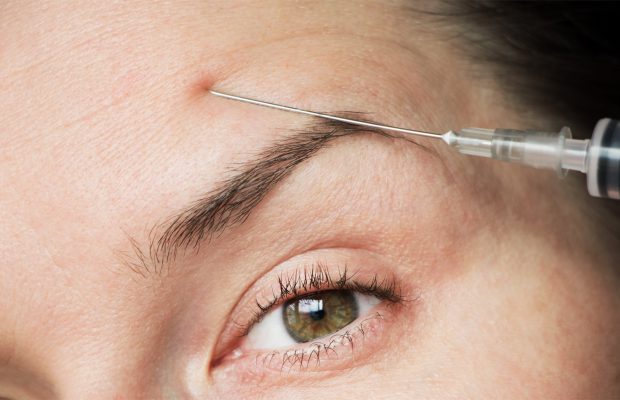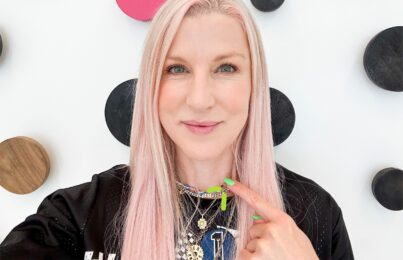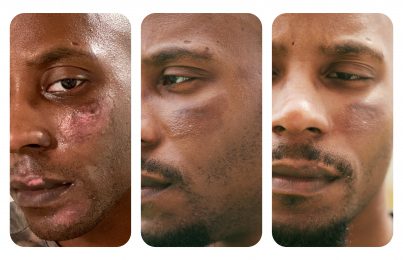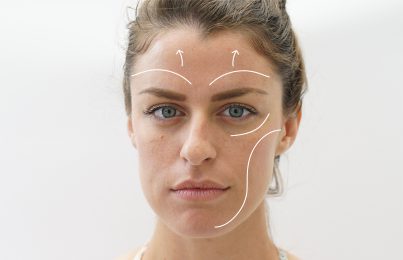With over 6 million Botox injection procedures performed in 2020, it’s definitely a contender for the most popular cosmetic procedure. Many people love Botox for its ability to soften even deeply-etched wrinkles, but this powerful substance has so many uses above and beyond wrinkle reduction.
To learn more about some of the unexpected ways Botox can improve your skin (as well as other areas of your life), I reached out to Dr. Sam Lam who is a board-certified facial plastic surgeon with his own practice in Plano, Texas — and the person who I go to for my Botox! Without further ado, here are five uses for Botox you may not know about.
1. Botox Can Help Skin Build Collagen
According to Dr. Lam, many of us have the wrong idea when it comes to how Botox works to improve wrinkles. It’s true that Botox blocks signals sent from nerves to muscles so that the muscle no longer contracts. This makes wrinkles relax and soften. But, there’s more to it than that.
“Botox has a cumulative effect and addresses wrinkles over time by helping the skin build collagen,” says Dr. Lam. “If movement in a certain area of the face is minimized for long enough, the skin starts to repair itself by building collagen.” Dr. Lam also notes that if you go in for injections more frequently at the beginning, you can get to a point where you need Botox less often because your skin will actually develop fewer wrinkles as its ability to build collagen improves. “I had patients who had been getting Botox with me for years, and during COVID they didn’t come in for almost two years,” says Dr. Lam. “Despite this, they had barely developed any new wrinkles in the areas where I’d been injecting them.”
While Botox can be a fantastic way to build collagen, remember that you always want to start by laying a good foundation with the right skincare routine. The first step? Protecting your collagen from breaking down in the first place by wearing an SPF of 30 or greater each and every day. For bonus points, pair your sunscreen with an antioxidant serum during the day for extra protection! At night, focus on collagen-building ingredients like retinol and peptides.
Still confused about how to build a routine for preventative aging? I’ve got you! Here are 10 things you can start doing right now to prevent wrinkles.
2. From Texture to a More Even Tone, Botox Can Improve Skin Quality
Aesthetically speaking, the perks of Botox extend beyond reducing wrinkles. It also provides more superficial benefits by improving overall skin texture and tone.
“A lot of people don’t realize that Botox can manage the quality of the skin overall, not just in the deeper dermal layers but also more superficially,” says Dr. Lam. “It can improve texture, making the skin look smooth and ‘glassy,’ and it can even improve the appearance of pores. Finally, it can help even out skin tone by encouraging your skin to heal discolorations over time.”
Because Botox has such an incredible ability to improve skin quality, Dr. Lam warns against consistently injecting only one part of the face and neglecting the others. “The problem is that a lot of people get Botox in the upper half of the face long enough that the skin here starts to have a better quality than the skin in the lower half of the face, and things start to look uneven. To combat this, I’ll often do ‘micro botox’ from the cheeks down to the chest. It’s a very diluted concentration that’s injected superficially, so it doesn’t really affect the muscles but does help manage overall skin quality to balance everything out. I really consider it a top-to-bottom approach.”
As an alternative to micro Botox, Dr. Lam will sometimes use radiofrequency microneedling for the mid-face to chest area. This can have a similar effect on skin quality and will also help build collagen over time.
If you’re worried about uneven or bumpy skin texture due to clogged pores, read this.
3. Botox Has Been Shown to Aid in Reduction of Scars
Another use for Botox that most people don’t consider is the reduction of scar tissue. Dr. Lam is a huge fan of treating wounded skin with Botox preemptively to minimize later scarring.
“We’re not 100% sure why Botox works so well for scarring, but there are a few theories,” Dr. Lam says. “One is that reducing movement and relaxing an area means less stretching and tearing of the wound, which means less irritation and therefore less scarring. Another is that Botox can improve microcirculation, promoting healing of the area where it’s been injected. Either way, it works so well that I usually pre-Botox a patient a couple of weeks before I do scar revision surgery. Direct injection into the scar can also be used post-surgery to improve scar tissue.”
Back in July 2020, my friend Thurman was in a scooter accident that left him with a nasty facial scar. Both Dr. Lam and I advised him on how to manage the injury to minimize scarring, and Dr. Lam suggested that Thurman get his scar injected with Botox once the injury was healed. You can read more about my friend Thurman’s journey and how to minimize scarring from a wound.
Even if it isn’t totally clear why Botox works so well for scar healing and reduction, the studies that have been done show promise. A double-blind study in 2014 compared wound healing between two groups of people, all of whom had undergone surgery for thyroid removal. Half the group was injected with Botox and the other half with a saline solution. Significant improvements were noted in those who had received the Botox, especially as compared to those who had gotten saline. Another study published in 2020 showed that Botox may be effective in the treatment of keloid scars. Both of these studies were fairly small scale and more research is definitely needed, but these results are definitely promising!
4. Botox for Migraines and TMJ or Jaw Clenching
As it turns out, uses for Botox go beyond just aesthetics. For years, Dr. Lam has been using it to help patients manage pain, especially chronic migraines or jaw discomfort related to TMJ and excessive clenching.
“Botox can work incredibly well for migraine pain, but it has to be the right type of pain,” says Dr. Lam. “If the pain is starting on the outside and moving inward, Botox works well. If the pain originates inside (like behind the eyes) and radiates out, Botox may not work as well. I always start by asking a patient, ‘where is the pain?’ If they’re able to focus it, I can usually get away with just a few units and provide immediate pain relief. Some neurologists will just botox everywhere, and I don’t agree with that because it’s not as exact. You really want to go to someone who has experience with this and knows what they’re doing, because migraines can be immediately knocked out if it’s done well.” Botox is now FDA approved for the treatment of migraines.
Dr. Lam has also been injecting patients for relief from TMJ for over 20 years. He’s a fan of precision when it comes to treating jaw pain as well and says he can often pinpoint where the pain is coming from by feeling the bands in a patient’s jaw. “Knowing how to inject in just the right place for pain is an art,” he says. Botox isn’t currently FDA-approved for the treatment of TMJ-related pain, but preliminary studies and anecdotal evidence show promise. Clinical trials are needed to understand the full effects of Botox on jaw muscles.
While headaches and TMJ are some of the most common types of pain Dr. Lam injects Botox for, it doesn’t stop there. “When it comes to pain management,” he says “I’ve injected almost every part of the body. Fingers, toes, back—you name it. The one caveat I want people to understand is that while Botox can be used for pain management, it’s not a solution to the underlying problem.”
5. Botox for Slimming the Face and Neck
Another happy “side effect” of Botox? Facial slimming. Dr. Lam noticed early on that when he was injecting patients for TMJ or jaw pain, they often ended up with a slimmer face over time. Since Botox “freezes” overactive jaw muscles, the muscles gradually shrink and become less prominent. He says the same method can be used to achieve a slimmer, more elegant neck when Botox is injected into the trapezius muscles.
As impressive as these five Botox benefits are, they’re only scratching the surface. There are so many off-label uses (both medical and non-medical) being studied, and the potential of this substance is really exciting. I think we’ll start to learn more about it in the coming years as it’s tested and approved for more uses.
Finally, if you’re considering taking the plunge and getting Botox for the first time, be sure to read this first.
Celebrity Esthetician & Skincare Expert
As an esthetician trained in cosmetic chemistry, Renée Rouleau has spent 30 years researching skin, educating her audience, and building an award-winning line of products. Her hands-on experience as an esthetician and trusted skin care expert has created a real-world solution — products that are formulated for nine different types of skin so your face will get exactly what it needs to look and feel its best. Trusted by celebrities, editors, bloggers, and skincare obsessives around the globe, her vast real-world knowledge and constant research are why Marie Claire calls her “the most passionate skin practitioner we know.”



